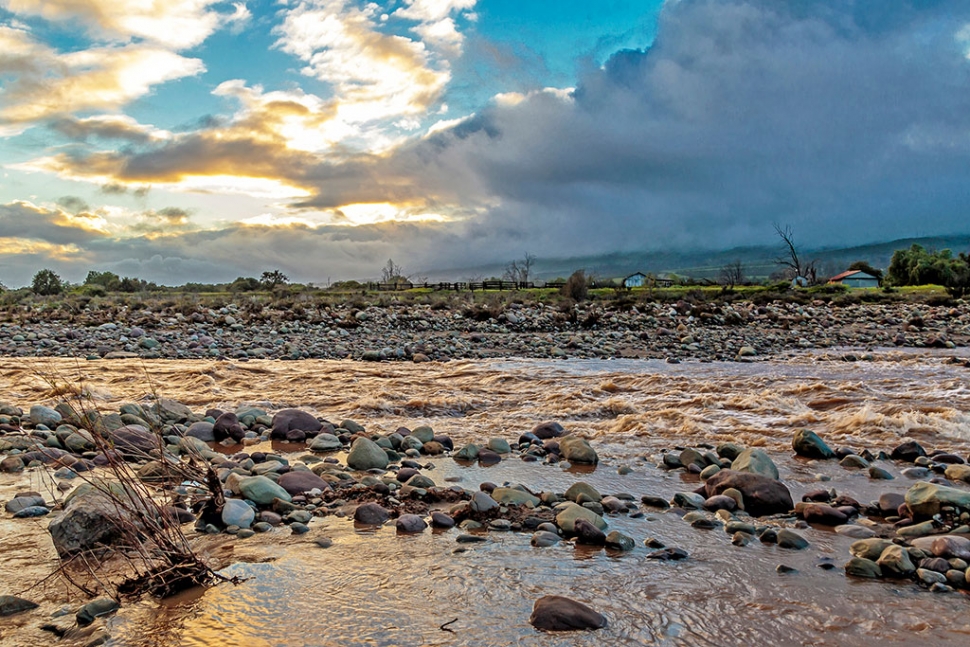|
Focus on Photography
 Photo of the Week By Bob Crum. Photo data: Canon 7DMKII camera, manual mode, Tamron 16-300mm lens@16mm. Exposure: ISO 100, aperture f/8.0, shutter speed 1/60th of a second. By Bob Crum — Wednesday, March 6th, 2019
How big is your budget?
 Bob Crum Hark phonetographers! I have interesting cellphone news. In my last column, I discussed three cellphone photographic limitations, i.e., specifically: optical zoom limits, DOF (depth-of-field) limitations and low-light issues. Well, I should have waited a week. I have since received a 'White Paper' from Corephotonics. Oh my! Corephotonics is the pioneer of multi-aperture cameras for mobile devices. Their primary mission is to perfect the mobile camera photography experience and to provide superior image quality. Corephotonics states that “we develop and deliver end-to-end multi-aperture solutions supporting the most professional photography capabilities, such as optical zoom, superb low-light performance, bokeh, depth features, and optical image stabilization, all in an incredibly slim form factor.” Although dual-camera smartphones have become a commodity in the high-end market segment, there are yet new dual camera topologies to be, announced Corephotonics. For example, the folded camera architecture provides dramatically improved zoom factor and low light performance. Next is a three-camera cellphone. Triphone? Seriously? However, not yet a done deal. The White Paper highlights three challenges which I'll paraphrase. Challenge 1: The expanded camera configuration occupies more room at the expense of other technologies that could be integrated into the mobile device. Challenge 2: Calibration; To achieve a seamless user experience and avoid artifacts during fusion or bokeh, the cameras have to be carefully calibrated. Challenge 3: Firmware, algorithms and power is the biggest challenge. Three cameras will require more processing which will substantially ding battery power. Furthermore, algorithms must assure reasonable processing run time while eliminating artifacts from multiple cameras. Three-camera cellphones are of course going to cost more! Present high-end duel-camera cellphones cost $800 to $1,100. Are you willing to pay $1,300, or more, for a high-end cellphone featuring three cameras? Cellphones are great for quick snapshots for email and social media. But I dare say that P&S (Point-and-shoot) dedicated cameras produce better overall image quality in most levels of light and provide more 'creative' control over your photos while remaining just as easy to use. Yes, just as EASY-TO-USE! A few outstanding P&S small cameras: Canon IXUS 185, Sony Cyber-shot WX220, Canon PowerShot SX730 HS, Canon PowerShot SX430 IS, Canon PowerShot G9 X Mark II, Panasonic Lumix LX15/LX10, Sony RX100 II, and for the adventurous, the Olympus TG-5, an everything-proof compact camera. Choose and enjoy! They all retail for less than $600! A Google Pixel 3 cellphone: $400. The unlocked 12-megapixel dual-camera Moto G7 cellphone with a zoom lens retails for $200! Let's do some math. Even today, if you bought a TG-5 for $350 and a Lenovo Moto G7 for $200, you'd have an excellent cellphone for snapshots, phone & text, and a much better all-around travel camera for $550. High-end cellphone costing $1000 minus $550 = $450 saved which is substantial! Think about it! Changing topics, note that I have not given up on establishing a Fillmore Photography Club. Think fun and educational! However, I don't own a projector that's essential for projecting photos on a screen for discussion and critique. I need approx $750 to buy a refurbished Epson projector and a portable screen. Ideas for a fundraiser will be appreciated. Put your thinking caps ON! Email me with your ideas. Or send a check! The photo of the week proves a camera's advantage. Bright areas of the sky and creek shadows below presented an extensive dynamic range of light. Such extremes are a challenge to photograph with any camera. Blown highlights and dark shadows illustrated the dynamic range of light exceeded my cellphone camera's capabilities. Cameras rule! The proof is in the photos! Send comments, suggestions and or questions to: focusonphotography@earthlink.net |
